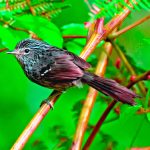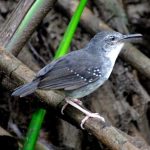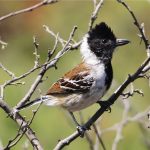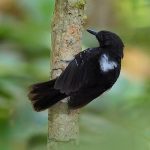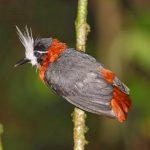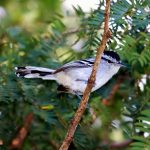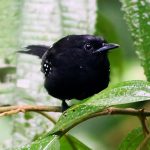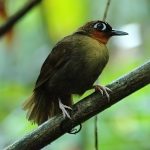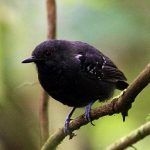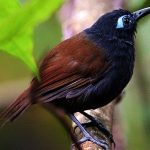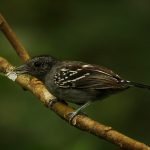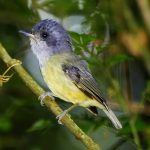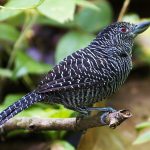Variable antshrike

Thamnophilus caerulescens
Common name:
variable antshrike (en); choca-da-mata (pt); batara bleuâtre (fr); batará variable (es); südlicher-tropfenameisenwürger
Taxonomy:
Order Passeriformes
Family Thamnophilidae
Range:
This South American species is found widely in eastern and southern Brazil, with disjunct populations in Ceará, Pernambuco and Alagoas. From southern Brazil, its range extends through Uruguay, Paraguay, northern Argentina, Bolivia, and along the eastern slope of the Andes in Peru, as far north as the Amazonas Region.
Size:
Variable antshrikes are 14-16 cm long and weigh 20 g.
Habitat:
They are found in a wide range of densely to lightly wooded habitats, ranging from the edge of humid forest to arid woodland. They are most common in lowlands, but it is primarily found in foothills in north-eastern Brazil, and is restricted to highlands up to 2.600-3.000 m throughout a large part of its Andean range.
Diet:
Variable antshrikes mostly eat insects which they glean from foliage. They also eat some fruits and berries.
Breeding:
The breeding season is variable and both male and female cooperate in building the nest, a cup woven with twigs and plant fibres, placed on a fork in a tree. There the female lays 2-3 which are incubated by both parents for 14-17 days. The chicks are raised by both parents and fledge 12-14 days after hatching.
Conservation:
IUCN status – LC (Least concern)
This species has a very large breeding range and, although the global population size has not been quantified, it is described as common. This population is suspected to be in decline owing to ongoing habitat destruction, but it is not considered threatened at present.

